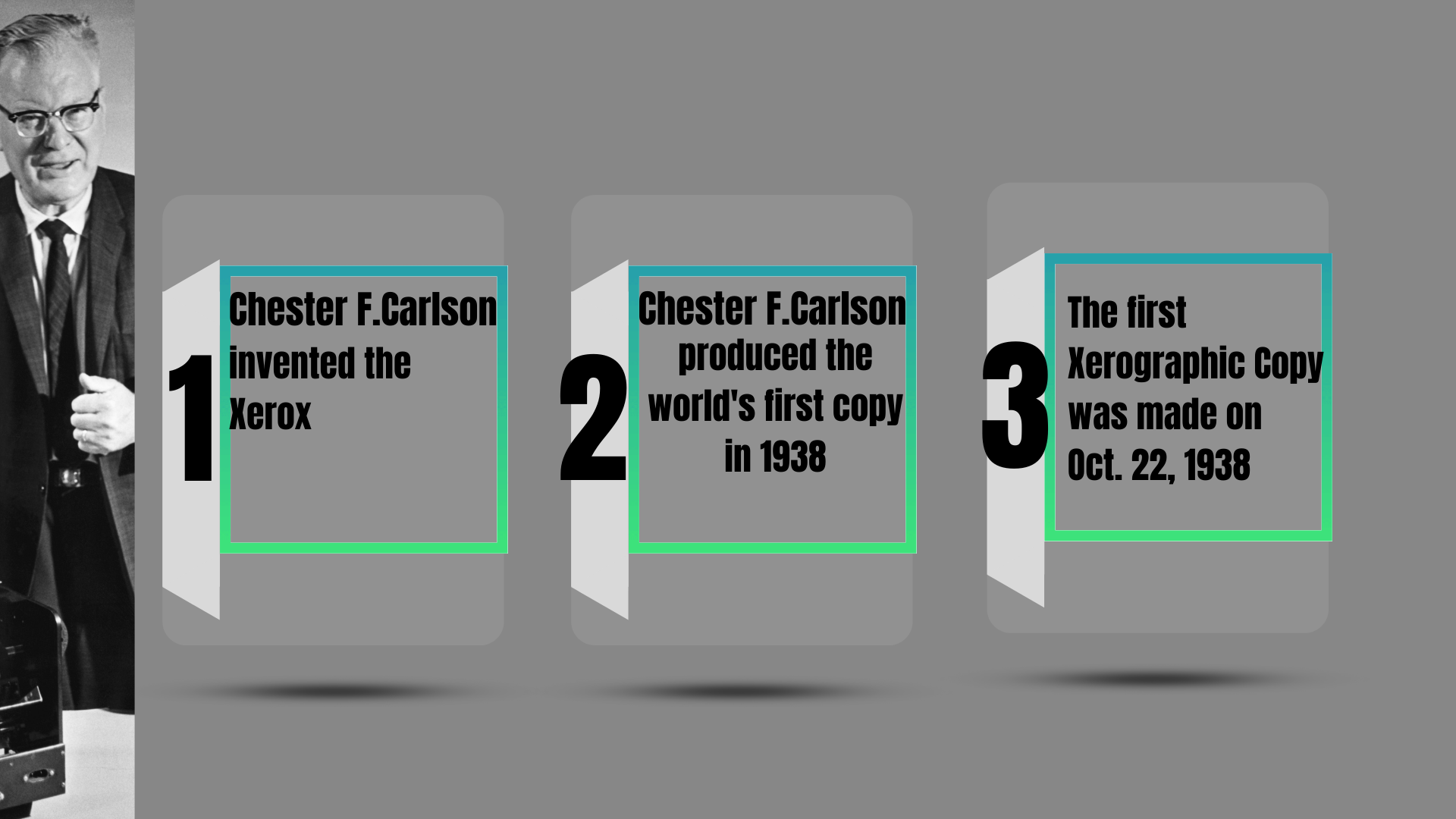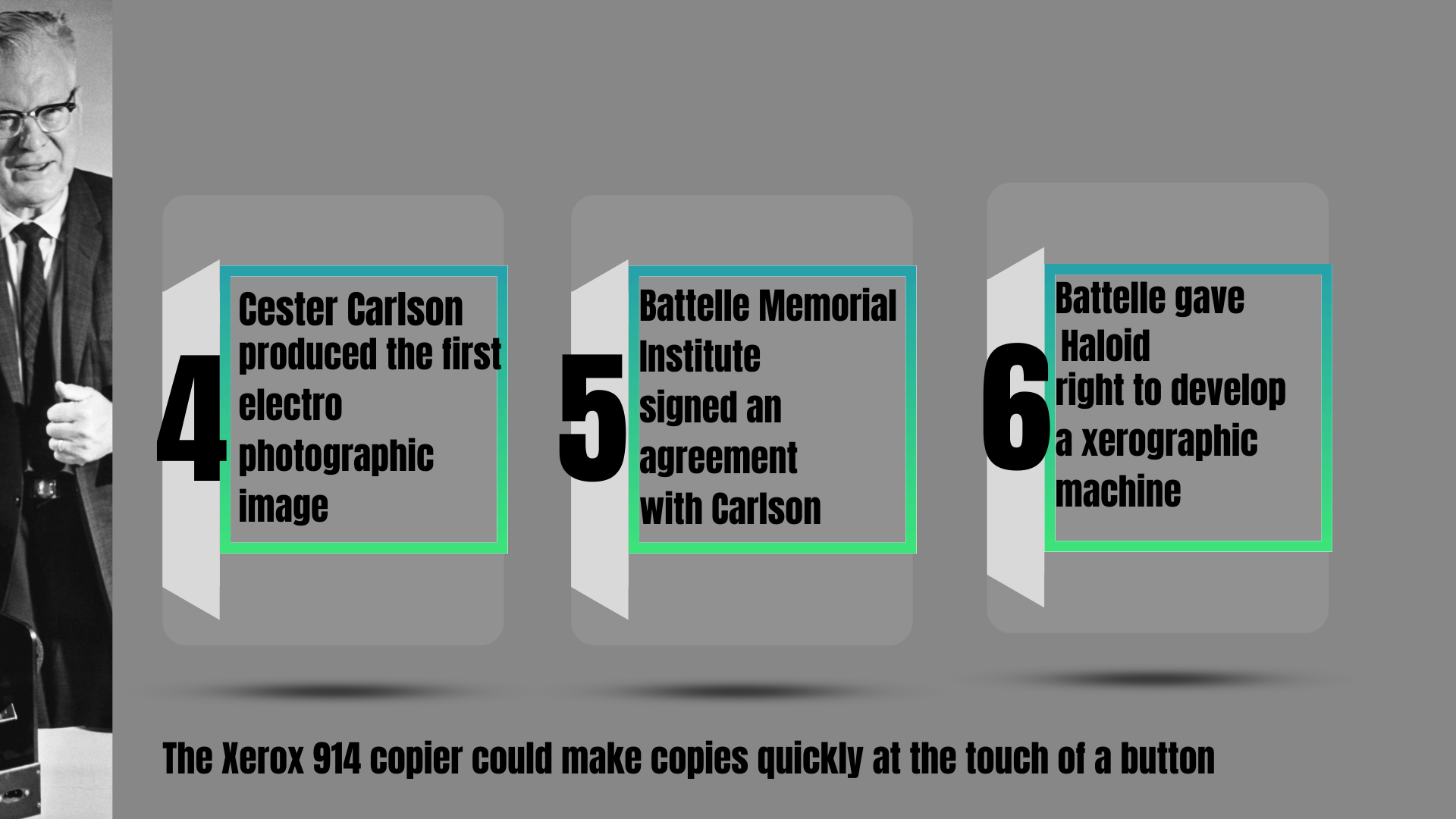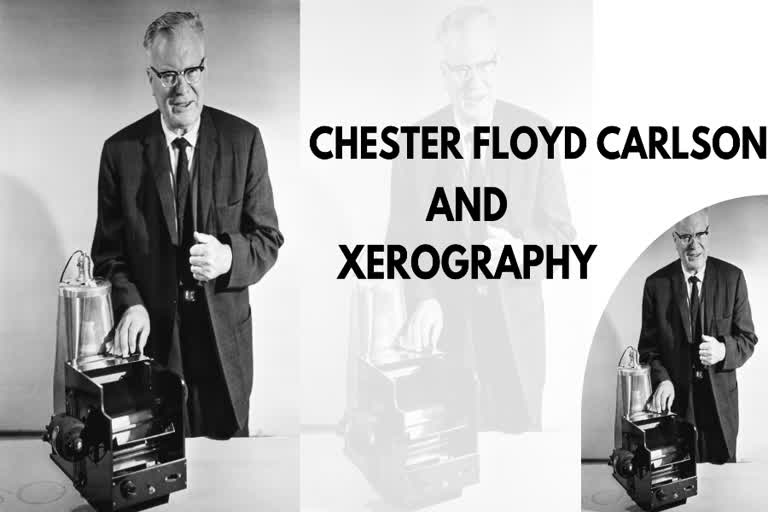Hyderabad: Chester Floyd Carlson revolutionized the way businesses operate with a simple invention: the xerox. He produced the world's first copy in 1938 in a small Astoria apartment in Queens, NY.


The first xerographic copy was made on Oct. 22, 1938, in a makeshift laboratory behind a beauty parlor in Astoria, Queens, a borough in New York City.
- Chester F. Carlson produced the first electrophotographic image. It's the precursor of the Xerox machine.
- Carlson tried to sell his invention around for several years, trying to find a company to develop it into a useful product, and was turned down by more than 20 companies including the National Inventors Council
"How difficult it was to convince anyone that my tiny plates and rough image held the key to a tremendous new industry," Carlson later recalled.
- Finally, in 1944, Battelle Memorial Institute, a nonprofit research organization, signed a royalty agreement with Carlson and began to develop the process. Three years later, Battelle made an agreement with a small photo paper company called Haloid (later to be known as Xerox), giving Haloid the right to develop a xerographic machine.
- Twenty-one years after Carlson made the first xerographic copy in his modest Queens laboratory, the first office copier was unveiled in 1959.
- The Xerox 914 copier could make copies quickly at the touch of a button on plain paper and was a phenomenal success.
- Even in the 1960s, when the 914 and successor products were spelling glory for Xerox, Carlson remained in the background preferring anonymity and he gave his opinion only when asked. Despite his invention making him a multi-millionaire, he chose to remain living modestly, giving away an estimated $100 million to various foundations and charities by the time of his death in 1968.
- In Carlson's last years, he was also given dozens of honors for his pioneering work, including the Inventor of the Year in 1964 and the Horatio Alger Award in 1966.
- In 1965, at the commemoration of the 175th anniversary of the U.S. patent system, he gave some of his original equipment, as well as that first xerographic print, to the Smithsonian Institution, where it is still on display.
- In short, the 914 was an astounding success, one of the most successful single products ever made. It launched a major corporation and revolutionized an industry. In 1961, Haloid Xerox took the name of Xerox, and its stock was listed on the New York Stock Exchange
Today, xerography is the foundation stone of the worldwide copying industry, and Carlson ended his years as a wealthy and much-honored man. But he remained both humble and generous, giving away $100 million of his personal fortune to charity before his death.
Also Read: NASA spacecraft makes 1st touchdown on asteroid Bennu



